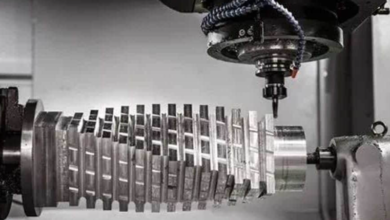Solar Companies Need Job Forms in HubSpot? Connect Field Service Software for Two-Way Form Sync

Solar companies have mastered the art of capturing leads through HubSpot’s powerful CRM platform. But many hit a frustrating wall when those leads convert to actual installation jobs. While HubSpot excels at managing the sales pipeline, job forms often become disconnected once field operations begin. Installation teams work with outdated information, site inspection notes never make it back to the CRM, and compliance documentation gets scattered across emails and spreadsheets.
This disconnect results in scheduling delays when critical site details are missing, compliance risks when inspection data doesn’t sync back to customer records, and frustrated customers who receive conflicting information from sales and service teams. The solution is field service software that bridges this gap with intelligent two-way form synchronization.
Why Solar Companies Struggle with Job Forms in HubSpot
HubSpot’s form capabilities are exceptional for capturing initial customer inquiries and basic job information. Solar companies can easily collect contact details, energy usage data, roof specifications, and installation preferences through customized forms. However, these forms weren’t designed for the complex, multi-stage processes that define solar installations.
The trouble begins when job execution moves beyond the initial customer interaction. Manual data transfers create scheduling delays when site inspection details never reach installation teams. Job records remain incomplete because field updates happen in isolation from the CRM system. Equipment serial numbers, installation photos, and completion certificates get lost in manual processes.
Solar-specific challenges make these problems even more acute. Consider a typical scenario. A site inspection reveals shading issues that require panel repositioning, but these critical notes remain trapped in a technician’s paper forms. When installation teams arrive weeks later with outdated site plans, they require costly rescheduling. And warranty claims become administrative nightmares when installation data exists in separate systems.
According to recent industry data, soft costs now account for up to 65% of residential solar system costs in the U.S. Much of this expense stems from inefficient data management and redundant administrative processes that two-way integration could eliminate.
What Is Two-Way HubSpot Form Sync with Field Service Software?
Two-way sync creates a smooth data bridge between HubSpot and field service operations. It ensures information flows in both directions in real-time. Unlike traditional one-way integrations that only push data from CRM to field teams, bidirectional sync keeps both systems continuously updated with the latest job information.
How It Works
The integration process follows a logical sequence that mirrors natural solar business workflows:
- Task Creation from HubSpot Objects
A HubSpot ticket, deal update, or contact change starts the flow. Any of those HubSpot objects can trigger an Arrivy task when your mapping and triggers are configured.
- Field Mapping in Arrivy
Mapped HubSpot fields populate the new Arrivy task (contact info, address, scope, priority, line items). Task creation can be automatic or rule-based depending on the trigger you set.
- Field data collection
Technicians use the Arrivy mobile app to complete digital forms, take photos, capture signatures, and log time on-site. Those form responses are stored in Arrivy and can be exported as PDFs.
- Bidirectional sync back to HubSpot
Arrivy can push updates back to HubSpot. Typical reverse-sync events include status changes, completed task flags, uploaded photos or PDFs, time logs, and changes to line items or products. These updates can create or update HubSpot Deals, Tickets, or Contacts according to your field mappings.
See also: Smart Cities: The Role of Technology in Urban Transformation
Why Two-Way Beats One-Way Sync
One-way synchronization creates a fundamental problem. Information becomes stale the moment field work begins. Sales and customer service teams working in HubSpot see outdated job statuses, while field teams operate with incomplete customer context. This data fragmentation leads to poor customer experiences and internal confusion.
Two-way sync ensures both your CRM and field teams always work from the most current information. When an installation technician updates equipment serial numbers or completion status, those changes immediately appear in HubSpot. Conversely, when customer service updates contact information or adds special instructions, field teams see these changes on their mobile devices. This real-time synchronization creates a true single source of truth across your entire operation.
Solar Job Form Examples You Can Automate
- Installation & Site Inspection Forms
Digital forms capture roof condition, shading analysis, and optimal panel positioning. Shading analysis becomes standardized through mobile forms that document nearby obstacles and optimal panel positioning recommendations. GPS coordinates, site photos, and measurements automatically attach to customer records. This creates comprehensive installation blueprints.
- Service & Maintenance Checklists
Ongoing service operations require detailed documentation for warranty compliance and customer satisfaction. Mobile forms capture equipment serial numbers, replacement parts, and before-after photos. All data syncs to HubSpot for warranty compliance and future reference.
- Warranty Claim Forms
Warranty processing becomes smooth when all supporting documentation exists in a single system. Digital forms collect proof-of-purchase, failure reports, and diagnostic assessments. Photos and repair documentation automatically link to customer records. This detailed documentation reduces claim processing time and improves customer experience.
- Compliance & Grid Connection Forms
Regulatory compliance requires meticulous documentation that’s easily accessible during inspections. Digital forms can capture e-signatures from customers and inspectors for approvals for audit trails. E-signatures, permits, and inspection certificates sync directly to HubSpot, ensuring audit-ready compliance documentation.
Benefits of Two-Way Form Sync for Solar Companies
The integration of HubSpot with field service management software yields measurable benefits for solar businesses.
- Faster Sales-to-Service Handoff eliminates manual data re-entry. When deals close in HubSpot, job details automatically populate in field service software.
- Real-Time Field Updates keep HubSpot records current. Customer service can provide accurate updates without calling field teams.
- Single Source of Truth consolidates all customer data in HubSpot while maintaining field efficiency. Sales teams access installation photos when discussing upgrades.
- Compliance & Audit Readiness becomes automatic with timestamped records and standardized documentation flowing through integrated systems.
- Customer Transparency improves when completion details and photos sync directly from field to CRM, building trust through immediate updates.
Industry data supports these benefits. Three out of four field service companies using mobile tools report higher staff productivity, while the rest note gains in customer satisfaction. Companies achieving first-time fix rates above 88% consistently outperform competitors on both revenue and customer satisfaction metrics. With 82% of field service organizations depending on mobile workers to upsell products and services, integrated data systems become competitive advantages rather than operational luxuries.
How to Connect HubSpot Forms with Field Service Software
Step 1 – Capture Job Requests in HubSpot
Configure forms for solar workflows with property details, electrical systems, and customer preferences. Ensure that forms capture complete information upfront, reducing the need for follow-up calls and site visits.
Step 2 – Map Fields to Field Service Software
Establish clear field mappings between HubSpot properties and field service software attributes. Contact information, job locations, and service requirements should flow smoothly between systems.
Step 3 – Enable Two-Way Updates
Configure synchronization settings to ensure completed field forms update original HubSpot records rather than creating duplicate entries. Establish update triggers based on job status changes, completion milestones, and quality checkpoints. This bidirectional flow ensures data consistency across platforms.
Step 4 – Test with Real Jobs
Implement integration testing using actual customer scenarios rather than generic test data. Create a site inspection form in HubSpot and verify that it automatically generates a scheduled job in field service software. Complete the inspection using mobile forms and confirm if updates appear in the original HubSpot record. This real-world testing identifies integration gaps before they impact customer operations.
HubSpot + Arrivy: Solar Job Form Integration
Arrivy serves as the intelligent bridge connecting HubSpot’s customer management with field service operations. As a verified partner in the HubSpot App Marketplace, Arrivy provides solar companies with proven integration reliability and ongoing support.
When solar installers complete site inspections using Arrivy’s mobile application, photos, measurement notes, and customer signatures automatically sync back to the corresponding HubSpot contact record. Installation scheduling becomes dynamic, with real-time updates ensuring optimal resource allocation. Customer communications improve dramatically when service representatives can access actual field photos and technician notes during support calls.
Before vs. After Integration
| Before Integration | After Integration |
| Manually re-enter HubSpot data into scheduling tools | Jobs created automatically from HubSpot forms |
| Paper forms for field teams | Mobile forms with instant sync |
| Manual updates to HubSpot after work is done | Field updates, photos, and signatures sync instantly |
| Status changes shared via calls or emails | Status changes trigger automatic notifications |
| Duplicate data entry and errors | Single entry reduces duplication and errors |
Quick Stat
The field service market will grow from $5.52 B in 2025 to $9.60 B by 2030, as more solar companies use integration to boost efficiency and customer satisfaction.
Ready to Sync Solar Job Forms in HubSpot?
Manual processes slow projects and drain technician time. Syncing forms both ways between HubSpot and field service software reduces paperwork, strengthens compliance, and keeps customers updated. With most technicians spending less than half their day on actual service work, integration lets them focus on quality installs and customer care.
Implementing two-way form synchronization can transform your solar operations. Your field teams, customer service representatives, and most importantly, your customers will experience the immediate benefits of truly connected solar service operations.



